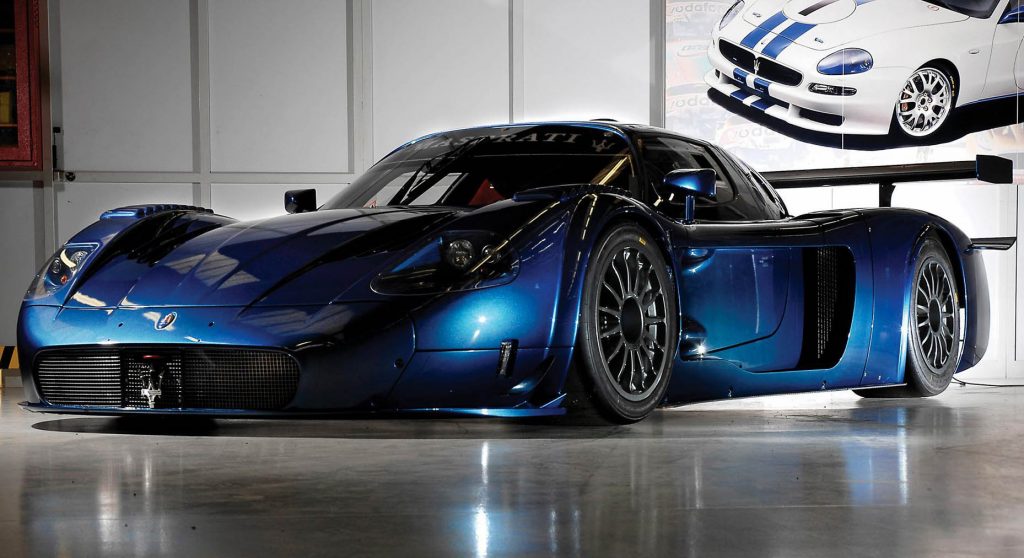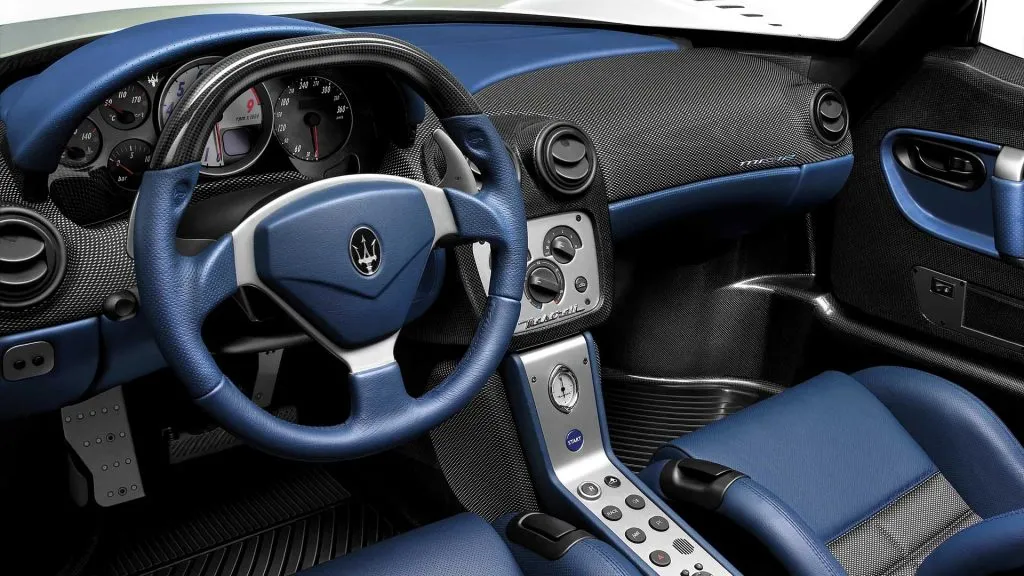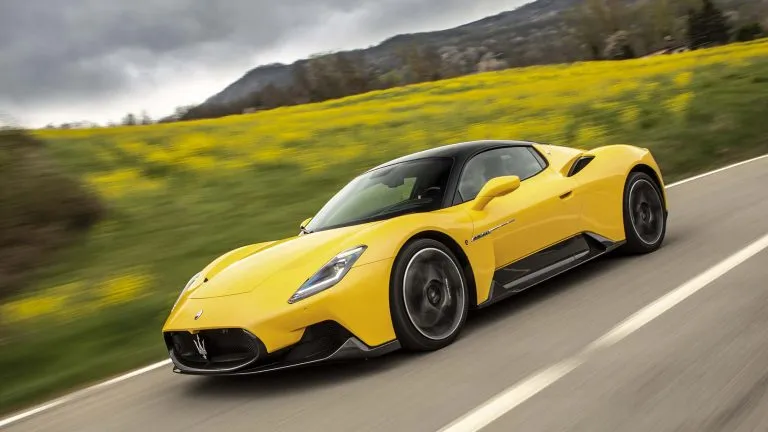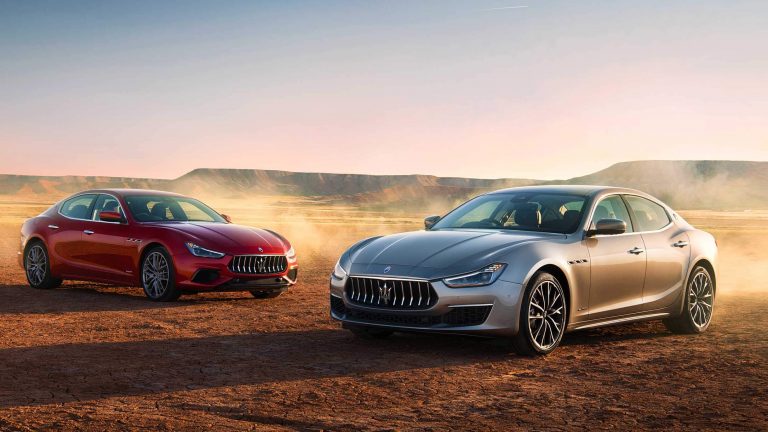Maserati MC12 Review – The Italian Supercar of the 21st Century
2004 would be a big year for Maserati. After a 37 year absence, the Modena carmakers had decided it was time to return to the racetrack in earnest. But they would need a racing car worthy of the Trident it wore on the front. So, with the continuing help of the Prancing Horse and a renowned F1 racing driver, as one of their test drivers, they would create an Italian Supercar fit for the 21st Century.

But, in order, to adhere to the rules of the FIA GT, the racing car had to be based on an existing road car. So Maserati would simply reproduce the racing car, with some street legal modifications, and sell the required amount. In the first year, Maserati sold 25 models while in the following year, 2005, they sold another 25 – and that was it. For the racetrack just 12 models were produced which made a total of only 62 automobiles. This rarified Italian racer would be known as the Maserati MC12.
Pricing for an extremely exclusive motor car would be comparable to the unique demand from its fiercely loyal customer base. The base price for the supercar was around US$800,000 though there would be a limited edition to follow. Just 12 models of the Maserati MC12 Versione Corse went on sale at US$1.47 million.
“Gentlemen…Start Your Engines!”
Having a brand and a stablemate as iconic as Ferrari is always a good idea, and the Prancing Horse had the very car from which to create the Maserati MC12 – the Enzo Ferrari. This was a 6 liter V12 sports car that first appeared at the 2002 Paris Motor Show and had a strictly limited production run of just 400 models. Going on sale between 2002 and 2004, 399 cars were offered to selected customers while the last model was donated to the Vatican for charity and it went under the Sotheby’s hammer for US$1.1 million.

This would be their starting base for the inhouse designers from Modena, and from comparing pictures of the cars, you can easily discern the resemblance between the two. However, the Maserati MC12 would be considerably larger than the Enzo and, due to its aerodynamic design, would have a lower drag coefficient than the Ferrari. But, due to its close similarities with its predecessor, it was often referred to as the ‘Second Generation Enzo Ferrari’.
It would be longer, wider and taller than the Enzo which left it a little slower as well. The Ferrari had faster acceleration, a higher top speed and a shorter braking distance. While the Enzo made 217.5 mph (but it has reached 221 mph on occasion), the MC12 only reached 205 mph though on the race track, when being tested for driving reviews, it would clock faster times than the Ferrari.
Wind Tunnel Efficiency
Initial designs were tested in the Maserati wind tunnels to gauge and improve its aerodynamics. The famous Italian sports car designer, Giorgetto Giugiaro, would present a design to the Head of Maserati Concept & Design, Frank Stephenson. It would be the inhouse chief who would create most of the body styling, as the MC12 took on a more smoother look and inherited the iconic Maserati front grille adorned with the Trident. In the end, only the windshield is the same as the original Enzo, as the rest of the bodywork was changed. This included a huge two meter (79 inches) long rear spoiler that would only be 30 mm thick (1.2 inches) which greatly improved downforce.

On the test track, most of the driving was conducted by their inhouse test driver, Andrea Bertolini, who was also an experienced racing driver in his own right. But Maserati were also able to call upon the expertise of Michael Schumacher who would also test drive the car for them.

During the early stages of development, the car was devised as two different models; the racing MCC (Maserati Corse Competizione) and the road legal MCS (Maserati Corse Stradale). But during the course of this process they opted to unify both under one name – Maserati MC12.
Enzo Power
Trident engineers would modify the Enzo Ferrari 6 liter V12 engine which would provide 621 bhp and 481 lb-ft of torque. The redline for the Maserati MC12 would be set lower than the Enzo, with the Maserati reaching 7,500 rpm while the Enzo was higher at 8,000 rpm. This produced acceleration from 0-60 mph at 3.8 seconds while making the quarter mile run at 11.3 seconds.

The six-speed automated manual gearbox was also held over from the Enzo Ferrari though it was given a new name – ‘Maserati Cambiocorsa’. Shift changes are completed in just 150 milliseconds from the brief touches of the shift paddles mounted behind the steering wheel.
The chassis is a lightweight and fire resistant composite of carbon and nomex with aluminum at the front and rear. The double wishbone suspension is adaptive and can be set in two different modes – Sport & Race. In “Race” mode the suspension stiffens up, shift changes are quicker, and the traction control and Bosch Anti Slip Regulation are turned down. The front suspension can also be raised to aid driving up hills or going over speed bumps.
Get a Grip
Wheels were also carefully designed to ensure the best performance. The 19 inch alloys were, once again, fitted with Pirelli P-Zero Corsa tires that were staggered in width, with 245mm in the front and 345mm in the rear. These radials are credited with more grip than the Bridgestone tires on the Enzo and were thought to have aided in the Maserati MC12’s faster lap time, at the Nürburgring, than the Ferrari Enzo. As always, Brembo disc brakes would be fitted on the car while Bosch provided the anti-lock braking system.

Balance is excellent with the mid-rear engine location (sitting just behind the cockpit) gives the car great stability and improves the car’s cornering ability. Weight ratio is set at 41% in the front and 59% in the rear.
Ode to Casner
The entire bodywork was manufactured from carbon and designed to enhance maximum downforce. This included the oversized rear spoiler, diffusers on the rear bumper and a smooth underside which takes advantage of the improved “ground effect”. At speeds of 125 mph, the downforce is 34% front and 66% rear. Enlarged air intakes on the side of the rear wheels and an air scoop situated above the cabin ensured the engine is kept cool at all times.

The smooth and seductive body shape only came in one color option, white with blue accents, that meant a lot to aficionados of racing and the Maserati owners. The color scheme was a homage to the famous American racing team, Casner Motor Racing Division (also known as America Camoradi), who were racing Maserati Tipo 60/61’s, but more commonly known as Birdcages. During the two year period, they would have a variety of racing drivers that included both Stirling Moss and Carol Shelby.
Streamlined Elegance
The racing car interior had been designed for its exact purpose but ensuring the highest level of luxury at the same time. All surfaces are a mix of carbon fiber that have been gel-coated, blue leather and ‘BrighTex’. This synthetic material originally came from the fashion world though it was deemed too expensive to use – so perfect for Maserati then. The two lightweight bucket seats, clothed in leather and BrighTex, are fitted with a lot of rear and side support to allow the occupant to feel snug during the explosive ride.

The consul is fitted out with the bare minimum that is required of the driver – speedometer, tachometer and a couple of necessary gauges. These sit in front of the steering wheel that has a flattened top to improve racing sight lines. The central panel has a selection of mode buttons and the ignition as well as the, ever distinctive, Maserati oval clock. No radio, no touchscreen, no sound system speakers and there would be no rear window, either.
The perceived lack of these items would be a point of criticism leveled at the Italian supercar, but it just shows that these people completely missed the point of what the car is about. While all these missing things were present in the Enzo Ferrari, did not mean they belonged in the Maserati MC12. The Enzo was built as a sports car, first and foremost, while the MC12 was only ever a racing car, that got sidetracked into appearing on the road. If any driver is trying to change a radio station or make a call from his phone through an entertainment system whilst hitting speeds of 20o mph is not prioritizing why they are in the car in the first place. Not to mention, the fact that the full throttle roar of the V12 engine will probably drown out anything the radio might be playing.
People complained it was difficult not to have a rear window and it made parking not so easy. Racing cars don’t have rear windows as they are not necessary. Their drivers use their side mirrors to see who’s coming up behind them and parking is not on their agenda.
Limited Edition MC12
If the specifications weren’t enough for their highly demanding customer base, there was a growing clamor to have the real racing Maserati MC12 GT1 available to buy. With the ever growing popularity and availability of being able to drive non-legal supercars on private race tracks only fueled the demand even more. So Maserati agreed.

In mid-2006 they issued 12 more models of the MC12 Versione Corse that came in a deep blue bodywork (or another color if you paid extra). This was the Maserati racing car everyone wanted. With 120 bhp more than the previous road legal model, the front of the car bears the nose that was used for the American Le Mans Series while the brakes are the racing standard steel/carbon variety. But there’s no anti-lock braking system – it is just a racing car after all (!)
The Lucky ones
For the majority of people, the chance of driving a Maserati MC12 (let alone owning one!) will be just a dream. Fortunately, there have been some lucky magazine reviewers who did get the chance to squeeze in behind the wheel and try this supercar out.
One lucky writer stated that he was quite amazed by how responsive the car was to its steering. The car would immediately respond to any turn of the wheel with no understeer or squeal of rear tires. The steering wheel was extremely light and the reviewer compared it almost to like driving an arcade game instead.

Paddle shift gear changes are quite smooth going up and down and not as abrupt or violent as the Enzo transmission. Acceleration Is as lightning quick as you would expect while the braking has several levels. Initially hitting the pedal you don’t feel the difference but applying more and the Modena Monster stops on a dime. Engine noise has that distinctive Maserati growl and not so abrasive as the Enzo’s engine vocalizations.
On his next outing, the Maserati test driver, Bertolini, would take the wheel and show how comfortable he was as he drove the MC12 to the very brink. As he fiercely applied the brakes to enter the cone chicane, from 185 mph to nothing, the reviewer got to experience how well the seat harness works on your body!

Overall, the reviewer was delighted with the drive and marveled at its responsiveness.
Maserati’s return to racing proved to be a successful one as they went on to win many races and titles around the world with the MC12 GT1. The racing performance was equally matched with its distinctive fluid bodyline and has gone into racing history along with many of its Trident predecessors. A racing heritage that goes back to their very first automobile which graced a racetrack in 1926.
This was a fine example of what the Maestro’s of Modena do best – build racing cars.






